✓ Joining us on our Whatsapp Channel: 💬 Explore and Escape!.
Booking through us:
✓ 🏩 🛌 Handpicked Luxury Stays in Budget: Booking.com | Agoda.com
✓ 🍹⛱️ Deals on Private xfers, SIM Cards, City tours, Day trips : 📍🗺️ GetYourGuide | 🛵🧳 Klook
There are an array of landmarks in Europe
to see, with Poland sharing quite a few of those!Poland’s rich history is etched in its iconic landmarks, standing firm as testaments of the country’s past, present, and future.
From the soaring towers of Krakow’s Wawel Castle to the neo-gothic spires of Poznań’s City Hall, these landmarks encapsulate the spirit, culture, and imagination of the Polish people.
Rousseau once said, “there is nothing more noble than scenery; majestic mountains, venerable trees, and poetic peaks,” and Poland’s landmarks are no exception, embodying the majestic beauty of the nation.
1. Wawel Castle-Kraków

Wawel Castle is a castle complex located in Kraków, Poland. It was once the seat of Polish royalty and is now a museum.
What to see or do: Visit the State Rooms and Royal Private Apartments which are the most beautiful and well-preserved parts of the castle. Admire the art collection and the tapestries in the castle’s galleries, or take a guided tour of the armory.
Visit the Cathedral to see the tombs of Polish kings and historical figures.
Don’t miss: The famous Wawel Dragon Statue that sits at the foot of Wawel Hill. According to legend, the dragon lived in a cave under the castle and was slain by a mythical hero.
Insider travel tips: Visit the castle early in the morning or late in the afternoon to avoid crowds. Buy your tickets online to skip the ticket lines at the entrance.
Take comfortable shoes as there are stairs and cobblestones throughout the castle. Visit the Wawel Cathedral for free on Sundays.
2. Main Square-Kraków

Main Square is a historic public square located in the center of Kraków, Poland.
What to see or do: The Main Square is surrounded by beautiful historical buildings and architectural landmarks, including the Cloth Hall, St. Mary’s Basilica, and the Town Hall Tower.
Visitors can also take a stroll through the square’s bustling markets and shops, or enjoy a meal or drink at one of the many cafes and restaurants.
Don’t miss: The hourly trumpeter’s call from the top of St. Mary’s Basilica, which has been played since the Middle Ages.
Insider travel tips: The square can be quite crowded, so it is recommended to visit early in the morning or late evening to avoid the crowds.
Additionally, be aware of pickpockets and keep personal belongings secure.
Finally, try some of the traditional Polish cuisine or enjoy a cup of coffee or tea while people-watching from one of the outdoor cafes.
3. Auschwitz Concentration Camp-Oświęcim

Auschwitz Concentration Camp was a Nazi concentration and extermination camp in Oświęcim, Poland during World War II.
What to see or do: Visitors can see the barracks, gas chambers, and crematoria that served as the killing grounds for over 1.1 million people.
The museum also houses a vast collection of artifacts, including prisoner belongings, photographs, and documents.
Don’t miss: The permanent exhibition in Block 27, which tells the story of the Roma and Sinti victims of Auschwitz, and the Memorial Site of the former Birkenau camp, located a short distance away.
Insider travel tips: – To avoid crowds, visit early in the morning or during the week.
4. Białowieża Forest-Białowieża

A UNESCO World Heritage Site, Białowieża Forest is one of the last remaining primeval forests in Europe, spanning across Poland and Belarus.
What to see or do: Take a guided tour of the forest to see its unique flora and fauna, including the rare European bison, lynx, wolves, and a variety of birds.
There are also many hiking and biking trails in the forest.
Don’t miss: The strict reserve area, where no human activity is allowed, offers a truly wild experience and a chance to see the forest in its natural state.
Insider travel tips: Make sure to book your guided tour in advance, as they can fill up quickly during peak season. Also, be respectful of the forest and its inhabitants by following all rules and regulations.
5. Malbork Castle-Malbork
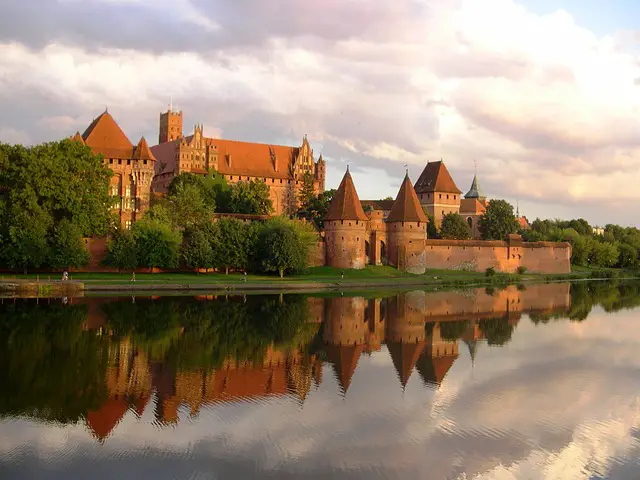
Malbork Castle is a medieval fortress located in the town of Malbork, Poland. It is one of the largest castles in the world and is listed as a UNESCO World Heritage Site.
What to see or do: Explore the castle’s impressive architecture, which includes Gothic towers, courtyards, and chambers. Visit the museum inside the castle to see exhibits on the castle’s history and medieval life.
Don’t miss the newly discovered medieval well, which is over 100 meters deep and believed to be one of the deepest wells in the world.
Don’t miss: The Castle Museum’s unique collection of amber artwork. Amber, a fossilized resin, is abundant in the region and has been used in art and jewelry for centuries.
Insider travel tips: Plan to spend at least half a day exploring the castle and museum.
6. Royal Castle-Warszawa
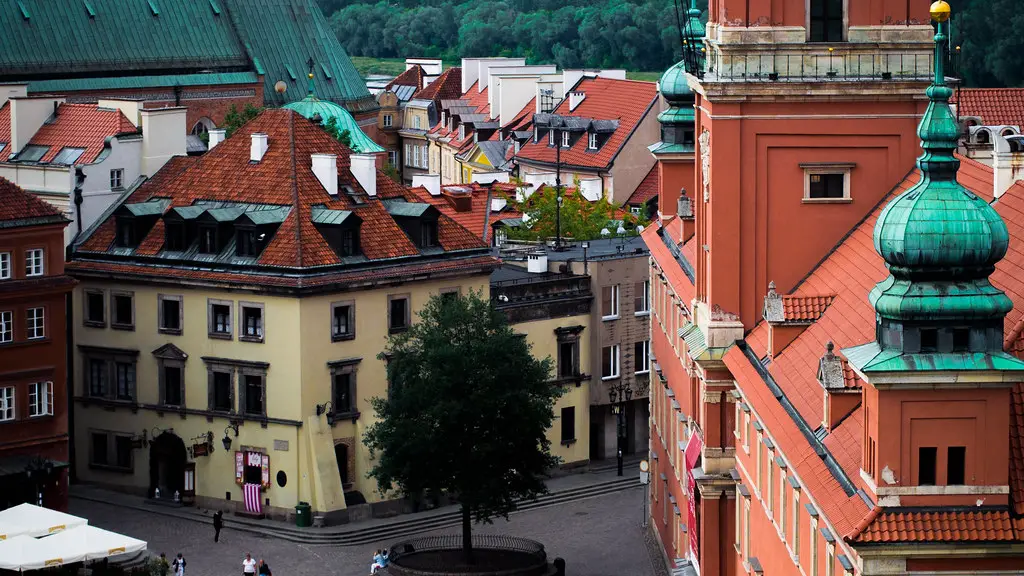
The Royal Castle in Warsaw is a grand castle located in the heart of the city, that used to serve as the residence of Polish monarchs.
What to see or do: Visitors can take a guided tour of the lavish interiors of the castle, including the Throne Room, Marble Room, and the Royal Apartments.
The castle also houses several art collections, including paintings, sculptures, and decorative arts.
Don’t miss: The spectacular view of the city from the Castle terrace is a must-see. Also, make sure to check out the Canaletto Room, which houses several paintings by the famous Venetian painter.
Insider travel tips: – Purchase tickets in advance to avoid long lines.
7. Palace of Culture and Science-Warszawa

The Palace of Culture and Science is a towering building in the center of Warsaw, Poland. It was a gift from the Soviet Union to Poland in the 1950s.
What to see or do: Take the elevator up to the observation deck on the 30th floor for panoramic views of the city. Marvel at the impressive architecture of the building and its towering height.
Don’t miss: The impressive clock tower on the front of the building. The clock is one of the largest in the world and is adorned with 24-karat gold leaf.
Insider travel tips: If you’re interested in Polish history, visit the museum inside the building dedicated to the Palace of Culture’s construction and significance in post-World War II Poland.
For a unique dining experience, make a reservation at the restaurant on the 30th floor – it offers stunning views of the city while you dine.
8. Copernicus Science Centre-Warszawa

Copernicus Science Centre is an interactive science museum located in Warsaw, Poland.
What to see or do: The museum has over 450 interactive exhibits that focus on physics, mathematics, engineering, biology and robotics. Visitors can enjoy experiments, hands-on activities, simulations, and workshops that will engage and educate them.
The museum holds various exhibitions, talks, and shows on science and technology.
Don’t miss: The most popular exhibit is the High Voltage Theatre that demonstrates the power of electricity through exciting live demonstrations.
Also, visitors can learn about the principles of physics by experiencing the motion simulators, which include chairlifts, a jet aviation simulator, and even a wind tunnel.
Insider travel tips: Plan your visit early, especially during the weekends, as the museum draws crowds. Allocate at least 3-4 hours to enjoy the exhibits and activities.
If you want to avoid queues and secure entry to the High Voltage Theatre, reserve tickets online in advance. The museum has a café, restaurant, and a gift shop that offers unique and science-related souvenirs.
9. Old Town Square-Wrocław

Old Town Square is the heart of Wrocław’s historic district and is one of the largest market squares in Europe.
What to see or do: The square is surrounded by colorful buildings with intricate facades and is home to numerous restaurants, cafes, and shops. Take a stroll around the area and admire the beautiful architecture.
Visit the Gothic-style St. Elizabeth’s Church, which offers spectacular views of the city from its observation deck.
Don’t miss: Be sure to check out the famous Town Hall, which features a stunning astronomical clock that shows the position of the sun, moon, and stars.
The Gothic Old Town Hall is also a must-see, as is the late Baroque-style Palace under the Four Winds.
Insider travel tips: Visit the square in the early morning or late evening to avoid the crowds and take in the stunning views uninterrupted.
There are plenty of street performers and artists that add to the lively atmosphere of the square, so be sure to catch a performance or two.
Sample some of the local delicacies, like pierogi or Polish sausages, from the food vendors and cafes.
10. Racławice Panorama-Wrocław

Racławice Panorama is a monumental painting depicting the Battle of Racławice that took place during the Kościuszko Uprising against Russia in 1794.
What to see or do: Visitors can observe the 114-meter painting from a central platform which gives the illusion of standing in the middle of the battlefield.
The painting is accompanied by a surround sound system that allows visitors to feel fully immersed in the experience.
Don’t miss: The intricate details and vivid colors of the painting are truly mesmerizing and make for a one-of-a-kind experience.
Insider travel tips: Visitors should plan to arrive early as lines can get long during peak tourist season. It’s also recommended to purchase tickets in advance to skip the queue altogether.
Photography is not allowed inside the panorama, so make sure to fully appreciate the experience in the moment.
11. Centennial Hall-Wrocław

Centennial Hall is a historic and iconic building located in Wrocław, Poland. It was built in 1913 and serves as a cultural center and event venue.
What to see or do: The Centennial Hall is a must-visit for history buffs and architecture enthusiasts. Its unique design makes it one of the most important landmarks in Poland.
Take a guided tour to learn about the building’s history and see the impressive architecture up close.
Don’t miss: In addition to exploring the Centennial Hall, visitors should check out the beautiful Japanese Garden located nearby. It’s the perfect spot to unwind and relax after a busy day of sightseeing.
Insider travel tips: – Plan ahead and book your tickets in advance to avoid long lines at the entrance.
12. Łazienki Park-Warszawa

Łazienki Park is a 76-hectare park located in the center of Warsaw, Poland. It is the largest park in the city.
What to see or do: The park is known for its stunning palaces, beautiful gardens, and peaceful lakes.
Visitors can take a leisurely stroll through the gardens, visit the Palace on the Water, or take a boat ride on the lake.
The park also hosts regular concerts, cultural events, and exhibitions.
Don’t miss: The highlight of the park is the Palace on the Water, which was built in the 17th century. This beautiful palace is surrounded by a tranquil lake and picturesque gardens.
Another must-see attraction is the Chopin Monument, which pays tribute to the famous composer and pianist who spent much of his life in Poland.
Insider travel tips: If you’re visiting during the summer months, be sure to check the park’s calendar for outdoor concerts and theater performances. You can also rent a bike or take a guided tour to explore the park’s hidden gems.
And don’t forget to bring a picnic lunch to enjoy on the park’s lush lawns.
13. Cathedral on the Water-Wrocław

A stunning 14th-century gothic-style cathedral located on the island of Ostrow Tumski in Wrocław, Poland.
What to see or do: Marvel at the intricate architecture of the cathedral, which features multiple spires and stunning stained glass windows. Take a guided tour to learn more about the history of the cathedral and the surrounding area.
Attend a religious service or organ concert.
Don’t miss: The chance to climb to the top of one of the cathedral’s towers for a breathtaking view of Wrocław and the surrounding landscape.
Insider travel tips: Arrive early in the morning to avoid crowds and get the best photo opportunities.
Consider combining your visit to the cathedral with a stroll around the beautiful island of Ostrow Tumski, which is home to several other historic sites and charming cafes.
14. Neptune Fountain-Gdańsk

The Neptune Fountain is a famous landmark in the heart of Gdańsk, Poland that features a stunning bronze statue of Neptune, the Roman god of the sea.
What to see or do: Visitors can admire the beautiful architecture surrounding the fountain, including historic buildings and colorful facades. Take a stroll around the fountain and marvel at the intricate sculptures and reliefs adorning its sides.
Don’t miss: Be sure to take a photo in front of the impressive Neptune statue, which stands over 10 feet tall and is a symbol of Gdańsk’s maritime history.
Insider travel tips: Visit the fountain in the early morning or late evening to avoid crowds and take in the peaceful atmosphere of this beautiful spot.
For the best views, climb the stairs to the top of one of the nearby buildings or simply sit on one of the benches surrounding the fountain and soak up the ambiance.
15. Medieval Port Crane-Gdańsk

A historic port crane that dates back to the medieval times in the Polish city of Gdańsk.
What to see or do: Visitors can explore the crane’s interior and learn about its fascinating history. There are also informative exhibits and displays that showcase the vital role the crane played in the city’s maritime trade.
Don’t miss: Watching the crane in action during the live demonstrations. It’s an impressive sight to see it lift up to 4 tons of cargo.
Insider travel tips: It’s best to visit early in the morning or later in the afternoon when there are fewer tourists around. Also, note that the crane is closed on Mondays.
16. Wrocław Zoo-Wrocław

A large zoo located in the city of Wrocław, Poland.
What to see or do: Explore the various exhibits featuring animals from all over the world, including lions, tigers, elephants, giraffes, and more. The zoo is also home to a large collection of birds, reptiles, and fish.
Visitors can attend animal shows, feedings, and even participate in a zookeeper experience.
Don’t miss: The Afrykarium, a state-of-the-art pavilion featuring African aquatic and land animals such as hippos, crocodiles, and penguins. Another highlight is the Oceanarium, where visitors can see sharks, rays, and other marine life.
Insider travel tips: Plan your visit in the morning to avoid crowds and make sure to wear comfortable shoes as the zoo is quite large and requires a lot of walking.
Bring your own food and drinks as the on-site options can be pricey. Consider purchasing a combo ticket with the nearby Centennial Hall for additional savings.
17. Jasna Góra Monastery-Częstochowa

Jasna Góra Monastery is a famous pilgrimage site in Częstochowa, Poland. The monastery is dedicated to the Black Madonna, a painting known for its miraculous powers.
What to see or do: The monastery offers visitors a chance to see the Black Madonna painting up close.
A guided tour of the complex allows tourists to explore the baroque architecture of the monastery and the 14 chapels and churches that make up the complex.
The Treasury of the Basilica contains priceless artifacts, including the coronation sword of the Polish kings.
Don’t miss: A visit to Jasna Góra Monastery is not complete without witnessing the daily procession of the Black Madonna painting. Visitors can join the faithful as they sing and pray while carrying the painting around the complex.
Additionally, it’s highly recommended to take part in the evening candlelit procession, a magical experience for both pilgrims and tourists.
Insider travel tips: To avoid crowds, visit the monastery early in the morning or on a weekday. There are also daily masses open to the public, and attending one can be a unique and spiritual experience.
Don’t forget to bring comfortable shoes, as the complex is quite large and requires a lot of walking. Remember to dress modestly out of respect for the religious site.
18. Tatra Mountains-Zakopane

The Tatra Mountains in Poland are a beautiful range on the border with Slovakia. Zakopane is the country’s winter capital and a gateway to the Tatras.
What to see or do: Enjoy the stunning mountain scenery, hike the trails of Tatra National Park, ski or snowboard in the winter, take a cable car to the top of Kasprowy Wierch, explore the traditional wooden architecture of Zakopane.
Don’t miss: Visit the famous Krupówki pedestrian street in the heart of Zakopane, try the local oscypek cheese, visit the charming Jaszczurówka Chapel, go to a Góral music and dance show.
Insider travel tips: – Avoid peak season (July-August and winter holiday periods) to avoid crowds and higher prices.
19. Muzeum Fryderyka Chopina-Warszawa
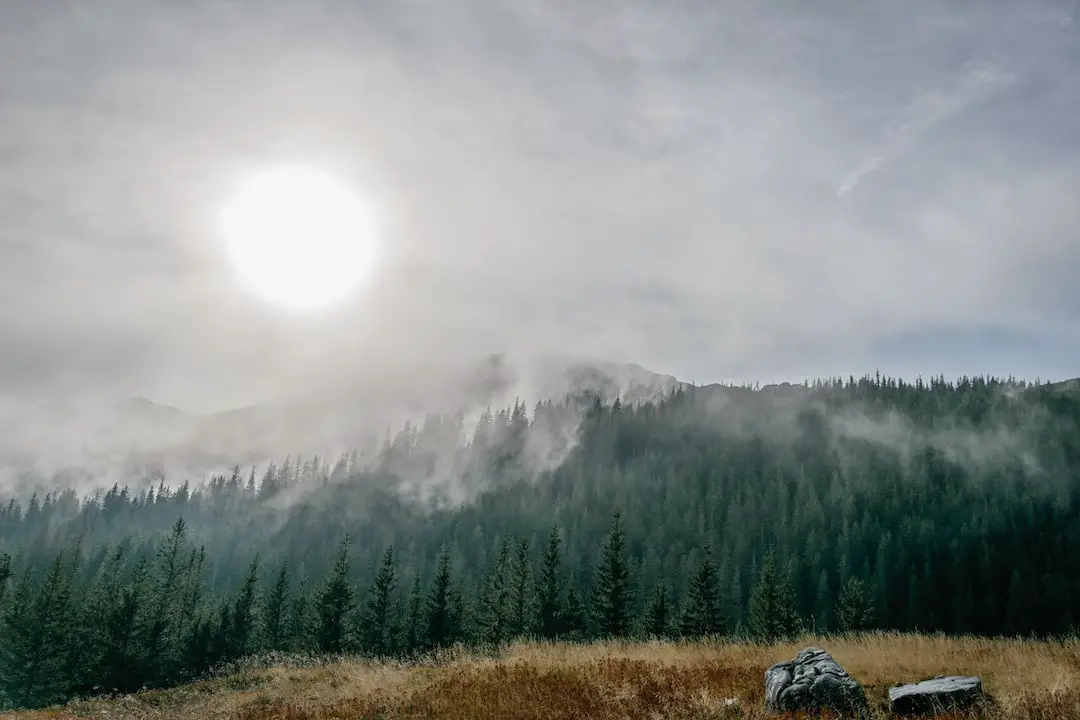
Muzeum Fryderyka Chopina is a museum dedicated to the life and work of the famous composer, Fryderyk Chopin.
What to see or do: The museum houses a collection of Chopin’s manuscripts, letters, photographs, and personal items. Visitors can see replicas of Chopin’s pianos and listen to his music in the multimedia section.
Don’t miss: The highlight of the museum is Chopin’s last piano, which he played in Paris and is decorated with paintings by his sister Ludwika.
Another must-see is the Chopin bench, located in the museum’s garden, where Chopin was said to have composed some of his pieces.
Insider travel tips: – The museum can be quite busy, so it’s best to buy tickets in advance.
20. Park Pierogi-Warszawa
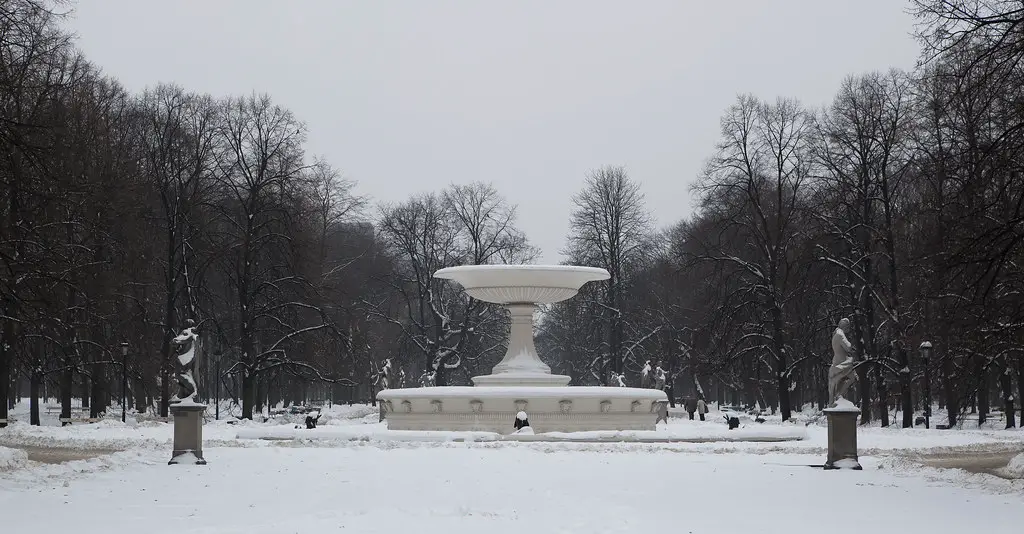
What to see or do:
Don’t miss:
Insider travel tips: Be sure to make a reservation, as the restaurant can get quite busy.
Also, don’t be afraid to try some of their unique pierogi flavors, such as pumpkin and goat cheese or duck and orange.
21. Sukiennice-Kraków
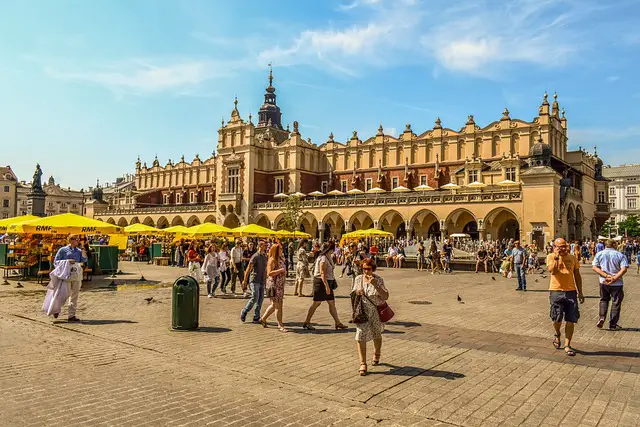
Sukiennice is a historic cloth hall located in the center of Kraków, Poland. It was built in the 14th century and served as a major center of international trade.
What to see or do: Visitors can explore the various stalls selling traditional Polish souvenirs, jewelry, clothing, and artwork on the ground floor of the cloth hall.
The upper floor features the National Museum’s Gallery of 19th-Century Polish Art, showcasing works from famous artists such as Józef Chełmoński and Stanisław Wyspiański.
Don’t miss: The beautiful Renaissance hall located on the second floor of the Sukiennice, where visitors can marvel at its intricate architecture and stunning ceiling frescoes.
Insider travel tips: To avoid crowds, try to visit Sukiennice early in the morning or on weekdays. Don’t hesitate to bargain with the vendors, but be sure to inspect the quality of the products before purchasing.
22. The Kosciuszko Mound-Kraków
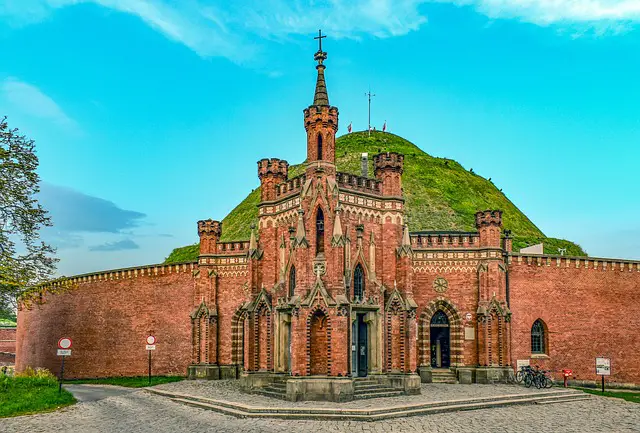
The Kosciuszko Mound is a man-made hill in Kraków, Poland that was built in honor of Polish national hero, Tadeusz Kosciuszko.
What to see or do: Climb up the Kosciuszko Mound and take in the panoramic views of Kraków and the surrounding countryside. Inside the mound, there is a museum featuring exhibits about Kosciuszko’s life and legacy.
Don’t miss: The stunning views from the top of the mound are not to be missed. Be sure to bring a camera to capture the scenery.
Insider travel tips: Try to visit the Kosciuszko Mound on a clear day for the best views. There are also guided tours available that provide historical context and interesting facts about the site.
Additionally, it’s recommended to wear comfortable shoes for the climb up the mound, which can be quite steep in places.
23. Lublin Castle-Lublin
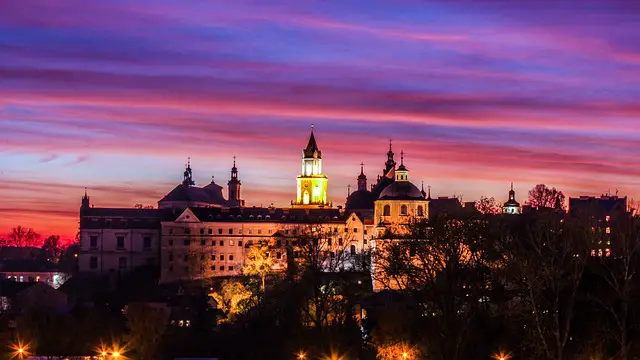
Lublin Castle is an impressive medieval fortress located in the heart of Lublin, Poland.
What to see or do: Explore the castle’s historical exhibitions and admire its stunning architecture and views of the city. Visitors can see the castle’s throne room, chapel, knight’s room, and prison cells.
Don’t miss: The castle’s tower offers breathtaking panoramic views of Lublin’s Old Town. Also, be sure to check out the castle’s courtyard and its impressive Renaissance arcades.
Insider travel tips: Grab a guidebook or join a guided tour to learn more about the castle’s rich history. Visitors can also participate in exciting events and concerts held at the castle throughout the year.
24. Poznań Town Hall-Poznań

Poznań Town Hall is a historic building that was built in the 13th century and served as the seat of local government in Poznań, Poland.
What to see or do: Visitors can enjoy a guided tour of the Town Hall, which includes the stunning Renaissance-style Great Hall, the museum, and the clock tower.
The tower offers spectacular views of the city and is a must-visit attraction for all.
Don’t miss: The mechanical goats, which come out at noon every day and butt heads as part of the clock tower’s famous show.
Also, check out the ornate sculptures and intricate artwork throughout the building.
Insider travel tips: Book a guided tour in advance to avoid long lines and to make the most of your experience. Additionally, come early to explore the nearby traditional Polish restaurants and shops before or after your visit.
25. Gdańsk Shipyard-Gdańsk

A historic shipyard in Gdańsk, Poland that played a significant role in the country’s political and social history.
What to see or do: Visit the European Solidarity Centre, which is located in the shipyard and is dedicated to the history of the Solidarity movement, which played a crucial role in the fall of communism in Poland.
The center features exhibitions, archives, a library, and a research center.
You can also take a guided tour of the shipyard to see the historic buildings and learn about the shipbuilding process.
Don’t miss: The Monument to the Fallen Shipyard Workers of 1970, which commemorates the 42 people who were killed during strikes in December 1970.
The monument is located next to the entrance to the shipyard.
Insider travel tips: If you want to avoid crowds, visit the shipyard on weekdays. The European Solidarity Centre offers tours in English, so it’s a good idea to book in advance.
Wear comfortable shoes as there is a lot of walking involved in the tour.
Also, keep in mind that the shipyard is a working facility, so be aware of your surroundings and follow safety guidelines.
26. Wigry National Park-Suwałki

Wigry National Park is a nature reserve in Suwałki, Poland known for its breathtaking landscapes and diverse flora and fauna.
What to see or do: Explore the stunning views of Wigry Lake, hike through the picturesque woodlands, or relax in one of the many campsites around the park.
Don’t miss: The Cistercian Wigry Abbey, a historic monastery situated on the shores of Wigry Lake that dates back to the 17th century.
Insider travel tips: Be sure to bring comfortable walking shoes, as the park offers many scenic trails and hiking routes. Also, consider exploring the nearby town of Suwałki for delicious local cuisine and a glimpse into traditional Polish culture.
27. Wieliczka Salt Mine-Wieliczka
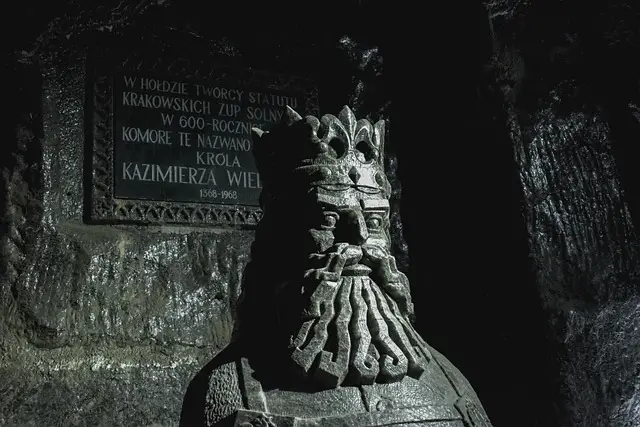
UNESCO World Heritage Site – a historic salt mine located in Wieliczka, Poland.
What to see or do: Take a guided tour and explore the underground tunnels, chambers and saline lakes. Marvel at the striking salt formations and sculptures created by miners over 700 years ago.
Don’t miss: The Chapel of St. Kinga, an intricately decorated underground chapel made entirely of salt, including its magnificent chandeliers.
Insider travel tips: Wear comfortable shoes and clothes, as the mine can be quite chilly. Be prepared to walk down several flights of stairs and back up again at the end of the tour.
Make sure to book your tour in advance, as it can be busy during peak tourist season.